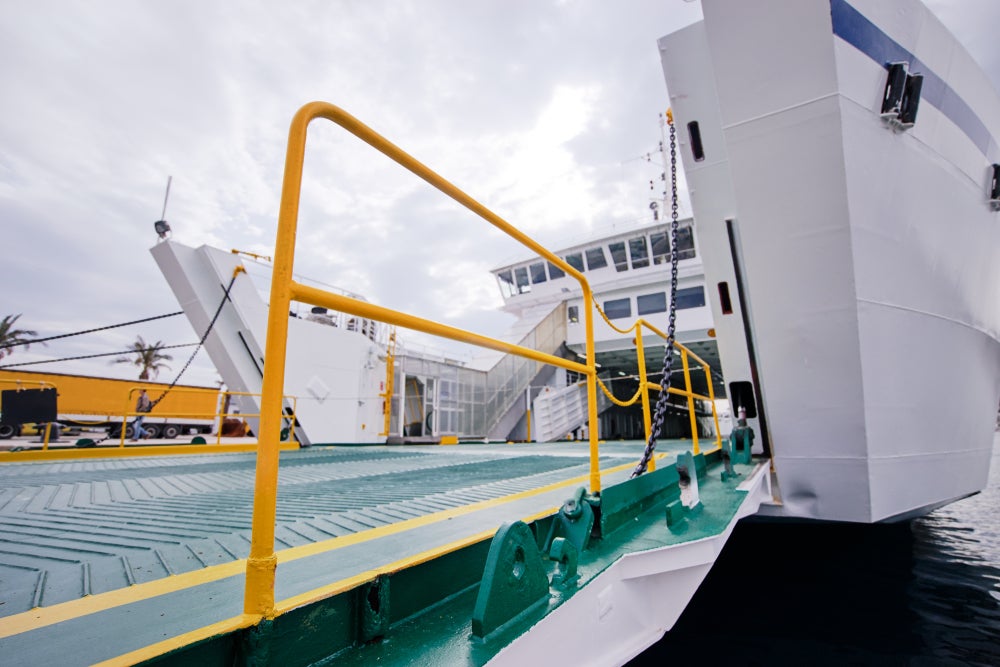Picture this: it’s 2035, and the expectations of revenue-generating passengers and cargo owners in the roll-on/roll-off passenger ferry (RoPax) market have changed dramatically. As cars and haulage become predominately electric in the near future, will motorists and cargo owners really accept a CO2-spewing RoPax ship?

It’s clear that a combination of customer pressure and increasingly comprehensive regulations – including shipping facing a price on carbon as it enters the European Union’s Emissions Trading System (EU ETS) in 2024 – will drive the RoPax market to decarbonise.
Paying a high cost on carbon or receiving an inferior rating in the International Maritime Organisation’s Carbon Intensity Indicator (IMO CII) rankings is sure to impact earning capacity, reputation and, by default, asset values – posing a balance sheet risk.
Taking care of the low-hanging fruit
While it’s true that, to date, the IMO has focused many of its greenhouse gas regulations on the bigger ships in the commercial fleet that makeup 85% of the industry’s carbon footprint, its attention will surely soon turn to the other 15% – including short-sea fixed route shipping. This 15% is ready for decarbonisation now using ultra-low and zero-emission technologies and may represent ‘low-hanging fruit’ or ‘quick wins’ for regulators.
Adding to the ‘push and pull effects’ are finance drivers such as the Poseidon Principles and increasing ESG expectations for owners and operators, and their wider supply chain and stakeholders.
See Also:
Superior funding, and ultimately all financing, will only come to ship owners and operators that provide a viable decarbonisation plan for the 30-year lifespan of their vessels. A drop-in fuel will not meet these green financing criteria as it will not be for life, will be costly, and will ultimately require a plan for ultra-low and zero-emission alternatives.
How well do you really know your competitors?
Access the most comprehensive Company Profiles on the market, powered by GlobalData. Save hours of research. Gain competitive edge.

Thank you!
Your download email will arrive shortly
Not ready to buy yet? Download a free sample
We are confident about the unique quality of our Company Profiles. However, we want you to make the most beneficial decision for your business, so we offer a free sample that you can download by submitting the below form
By GlobalDataWith all of this in mind, RoPax shipowners and operators need to visualise the future when planning for the energy transition. When planning for the long-term, the rationale for embracing zero emissions technology such as hydrogen fuel cells is clear, and encouragingly there are opportunities to adopt these technologies today.
Why now for RoPax?
Fuel cells are now ready to take on the heavy lifting of decarbonisation. There is a new generation of marinised, powerful, and ocean-ready cells available to tackle a major source of transport emissions. You only have to look at PowerCell Group’s recent agreement with Norwegian transport group Torghatten Nord to see marine hydrogen fuel cells in action.
The project – representing the culmination of 3-years of future-proof planning for the energy transition – will deliver fuel cells to two 599 passenger-capacity RoPax ferries, each carrying 120 cars and twelve trucks. The ferries are expected to reduce CO2 emissions by 26,500 tonnes per year, equivalent to the CO2 emissions from 13,000 diesel cars per year.
Ships with fixed routes and frequent port calls, such as the Torghatten Nord RoPax ferries, are a clear place to start, as they can benefit a lot from alternative fuels. Ferries with no harmful local emissions such as SOx, NOx and particulate matter also improve air quality for passengers, crew and port communities.
A RoPax needs power from A to B, not for two weeks at a time or longer. This is where the use of fuel cells comes into play as they are perfectly suited for demanding applications where operational reliability, high power density and compact format are important parameters. They also deliver a particularly strong return on investment on these routes – both in cash and carbon terms – and first movers will gain a competitive advantage.
Good timing for fleet renewals
The second main reason to embrace zero-emissions technology is that the timing is right; the RoPax fleet is due for renewal. The European RoPax fleet, for example, is currently an average of 38 years old according to PowerCell Group’s analysis. This age profile means there is a significant need for newbuilds to incorporate clean technology or for existing vessels to be retrofitted.
A recent analysis by class society DNV of EU MRV data reiterates the need for new cleaner vessels. It revealed that a significant portion of the existing RoPax fleet will already have challenges meeting IMO requirements within the next two to five years – 47% with CII ratings of D and E.
This is not the case just for old ships but vessels 10 years of age already rated E as well. Fleets with a strong CII rating and adapting to the anticipated price of carbon triggered by the EU ETS are needed today.
The bottom line is that demands for zero-emission marine transport from customers, regulators and financiers are increasingly strong and only set to strengthen in the future. RoPax ship owners and operators must plan for this reality and the longer-term energy transition, and adopting futureproof zero emissions technology should be central to any sustainability strategy.
Hydrogen fuel cells are already delivering decarbonisation to the RoPax sector, so ship owners and operators should be seriously considering adopting them today.









Related Company Profiles
Powercell Sweden AB
DNV Group AS